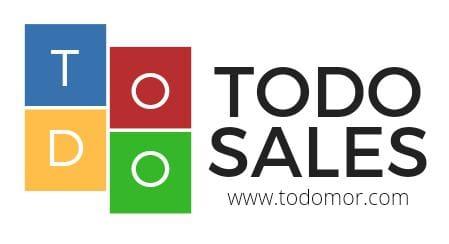For any business involving sales, the concepts of acquiring leads and lead management come into play. An enormous amount of time and resources is devoted into lead generation. The idea is to find people who are willing to buy your product and to nurture them to end up buying.
When we talk about what a good lead is, what one is looking for is an individual with an interest in your company’s product. These “High Quality leads” are typically the ones that boost your sales and return of investment. But in terms of the on-ground reality, many companies go for quantity as opposed to quality. This sparks a discussion as to which methodology works best.
In today’s day and age, we have an array of marketing tools and software. These are oftentimes combined with social media platforms. Using such technology allows sales executives to hone their skills in acquiring leads.
Lead Generation: What Does it Mean?
If an individual is interested in the service or product your company has to offer, they are considered a lead. People have different preferences. One should not make the mistake of generally marketing to everyone instead of specifically marketing after identifying your target audience.
So, simply put, lead generation is the process of identifying prospects and their subsequent conversion into someone who shows a genuine interest in your organization’s services. Many leading companies employ varying lead generation strategies for the same. A few of them are:
- Blog about topics related to your products and services
- Email marketing
- Social media marketing
- Networking with the target audience
- Live events and seminars relating to your product and service
- Landing pages of websites
Following Up on Leads
Lead generation and lead management strategies can differ from industry-to-industry. This means that most companies do not necessarily use all the abovementioned methods to generate leads. Most leading companies have tried and tested methods that work for them. These are used the most often.
For instance, methods like social media marketing are extremely targeted and industry-specific. So let’s take, for example, a company whose products are targeted at a customer base with an older audience. They do not use social media as much. For this specific purpose, this strategy will not work.
So, to make sure your lead actually ends up buying, sales executives of the company have to look at the whole process as helping your customer solve a problem they have. It also means that if the customer has no interest in your product or service, trying to convince them otherwise would be counterproductive. They might feel coerced into spending money. This can put a serious dent in your organization’s reputation.
Hence, it is important to follow up on your target audience only through lead generation. This makes sure that the ideal customer is interested.

Benefits of Lead Generation
- Identifying the right audience– The lead generation process enables company to pour more resources into a specific segments. This is better as opposed to spending a larger amount of resources on general marketing, with no optimal results.
- Increased awareness – Lead generation can cause your company to climb higher in the brand reputation ranking. It helps build awareness.
- Lead generation data– Lead generation helps you with the gathering of important marketing information from prospects. For example, companies can obtain this information through forms on website landing pages.
- Brand Loyalty – Lead generation ensures that you have a pool of customers who have similar needs and preferences. This in turn creates a larger network amongst them. You will see a significant increase in customer loyalty.
As discussed, focusing on increasing the new customer base with the help of quality leads will ensure customer loyalty. This also means an improved ROI. Hence, you are able to get back to your new and existing customers faster when you have a larger customer base.
Having mentioned all the pros of pursuing high quality leads, it must be noted that a quality lead can still back out at the last moment. This would mean that your sales executives will have lost some significant amount of time and effort put into nurturing the leads.
How to Find Good Quality Leads?
Surveys of B2B marketers often tend to point out the huge impact social media networks have on the lead generation process.
Using social media for lead generation is the way to go. But it is important to realise that selecting the right network platform that suits your industry becomes a deciding factor for its optimal use.
As per research, LinkedIn is the social network that generates the greatest number of B2B leads. This makes it a good start. It is an excellent platform for professionals willing to connect with each other.
Personal Interactions with Potential Leads
Most B2B marketers understand that it’s not easy to get in touch with company owners or top management directly. This is where LinkedIn helps you. Try to connect with these individuals directly on the platform. Being a business-centric platform, professional pitches and proposals are considered amenable. While other platforms like Facebook or WhatsApp could work, these approaches may come across as unprofessional. That is, unless you know more about the person being contacted.
Once you have successfully reached out to an executive, you must ensure that you have a high-quality presentation or sample ready.
Referrals
Referrals are a good source of quality leads. If a currently existing customer had a good experience, they could recommend it to their colleagues and people they know. However, clients won’t just hand you quality leads unless you request it from them with the help of some form of incentive. The incentives could be discounts, offers, etc.
Also, if you do connect with company owners or top management, you could offer them your products for free or at a discount in exchange for quality leads. Consequently, building a good relationship with these company owners gives you an opportunity to get in touch with their vast network of other. This further enables you to find quality leads in them if possible.
Apart from this, leveraging the use of Facebook as a platform can also prove to be a source for quality leads. Many companies miss out on the customised options Facebook has to offer for businesses. Instead, simply post product-related content. They often forget to pay attention to their Facebook page layout. When treated as a landing page, it can generate a lot of leads.
For example, constantly updating the page with engrossing and interesting content which are interactive to the user serves as an excellent source of lead generation. In this way, one can easily get information from prospects via forms, registration etc.
Finding Quality Leads: How to Start?
The definition of what a quality lead means often changes from company to company. Based on what products or services they have to offer, the best starting point would be to track all inbound leads. This means that any information that a user enters on website forms or in landing pages will serve as lead information. The lead information collected through such means can be organised and sorted with the help of the lead management software present in the ToDo sales app, a sales CRM that enables you to manage leads, make sales, close deals, and much more, all in one place.
The ToDo sales app, is one such app with a lead management system that provides you with exactly what you are looking for. We help you identify high quality leads with increased chances of conversion. We help your sales executives see through the process with the customer till the very end. Take the plunge and book a free trial now!



